08
2016A Student’s Essay on My Art Practice

A few months ago, David McDonnell, an A-Level student from Ballymena, got in contact with me asking for some feedback and information about my art practice. He discovered my artwork at the Ulster University Degree Show, where I exhibited my latest photography series ‘Unnoticed’ (which I will be uploading to my website soon). Throughout his final project, he produced an essay with an analysis and response to my artwork.
It feels really good, yet really strange, to have a student write about your art, considering I was studying artists like Salvador Dali back in A-Level. His analysis of my art practice provided me with a condensed perspective of how my artwork has progressed over the past few years, both visually and conceptually, which I found very beneficial as it allowed me to evaluate my own work.
After viewing his photography work I was captivated, leading me to investigate him further. From this, I learnt about his ‘Urban Typography’ series which instantly inspired me, providing a foundation of potential experiments and ideas to consider for my upcoming project.
CONTEMPORARY ARTISTS
CONOR O’BRIEN
Contemporary Background
O’Brien is a contemporary artist based in Northern Ireland, who recently graduated with a degree in Fine Art from the University of Ulster, Belfast. He works within a range of different media and processes to produce his artwork, varying from traditional paintings to photography. Within his artist statement, O’Brien states that, “I aim for my work to be multi-layered.” This relates to physical conditions within his work, as well as the message it is aiming to convey. This is particularly true for ‘Urban Typography’, which relies heavily on physical multilayers to achieve its realistic form. This is something which I particularly enjoyed about O’Brien’s work, as he focuses upon creating content which contains an actual purpose, and often relates to social and political issues. Urban Typography does not necessarily share a similarly strong message as his other works; however, its purpose is as a simple and honest message of aiming to replicate real life situations. The various pieces were produced during a time when the economic climate was at a low, resulting in individuals and businesses needing to make redundancies. This also refers to O’Brien’s ‘Victim of Circumstance’ painting which was inspired by aspects from his previous work, including ‘Urban Typography’.
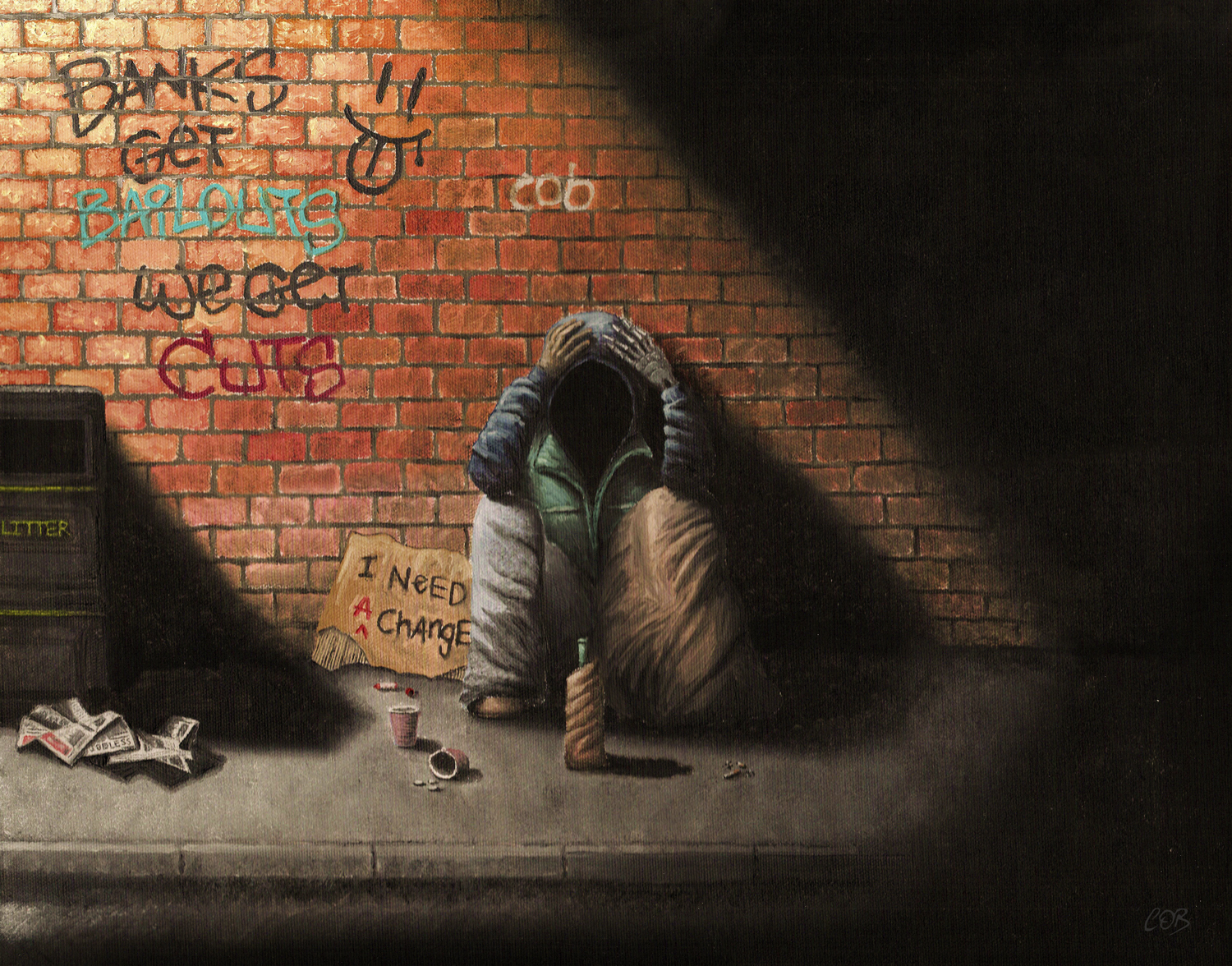
Victim of Circumstance
This time of economic meltdown also resulted in many people becoming homeless, hence the scene displayed within ‘Victim of Circumstance’. Furthermore, direct inspiration for Urban Typography can be clearly linked based on the background imagery for an urban decayed wall. O’Brien has returned to the theme of urban decay throughout his career, however his application of this idea has varied. In ‘Victim of Circumstance’ it enabled a political issue to be addressed, ‘Urban Typography’ allowed an experimental process into semi relief and the replication of real life material. One of O’Brien’s photographic series was based upon the idea of projecting bright images within areas of the urban environment, in order to render a futuristic and dynamic aesthetic. These three different ideas and projects are each very different and unique from each other, however their underlying theme is the same. His newest photography series entitled ‘Unnoticed’, which has yet to be released, will also focus on urban environments as its subject matter, indicating his continuing progression into this theme. As a young artist, I feel that this is O’Brien realizing his style, allowing him to progress more within a single area, whilst branching out to a number of different subjects. I personally feel from looking at his work, that O’Brien wants to expand and experiment with different media and subject matter, as this enables progression and a break from pursuing a single area.
Influence and Inspiration
It’s apparent for this particular series that O’Brien has been directly influenced by his local environment across Northern Ireland. This was one of the main charms of this series for me, as I have previously and continued to study similar subject matter. O’Brien is a very versatile artist, in that he does not limit his work to a single medium or process. Urban Typography is a unique series to him, in that it is his first semi relief collection of works. Before this, O’Brien produced traditional paintings and photography which he still pursues today. Due to his wide range of outputs for his artistic expression, it is expected that influences from specific artists from each of the different fields will be prominent within his work. Similar to that of his wide range of media, his style of art has also not remained fixed, with each work following a different style. In the case of Urban Typography, realism is his main objective as he wanted the pieces’ appearance to match reality. “…unique pieces which actually look like old, weathered, decaying pieces of the urban environment.”
In regard to the artists who have directly inspired O’Brien work and style, there are a range which vary significantly in terms of their approach. Caravaggio has inspired works such as ‘Victim of Circumstance’ and ‘Running Out of Ideas’, which both follow a very dramatic composition similar to that of Caravaggio, especially ‘Running Out of Ideas’ which also adopts the idea of a surrounding dark background, to bring warmth and emphasis to the foreground and main subject of the painting. Although this adoption may be subtle, some of his other works contain a much more observable adoption of the other artists’ styles. In particularly his ‘Darkness’ photography series shares an almost instant resemblance to that of Gregory Crewdson’s imagery, sharing a similar aesthetic as well as matching visual elements. It’s fair to say that O’Brien will continue to adopt and change Crewdson’s style in future, as well as within his new ‘Unnoticed’ photography series which also focuses on dark, urban environments.

Crewdson’s Untitled (Maple Street), 2004 and O’Brien’s Untitled 1 – Darkness, 2014. Notice O’Brien’s adoption of a light subject and an open car door in his composition, an obvious homage to Crewdson.
O’Brien has also commented on his influence by David LaChapelle, however I feel this relates to LaChapelle approach to including social messages within work, as opposed to his actual visual style. I found it fascinating to view an artist’s evolution of shifting their direction from traditional art to photography. I personally feel that this introduction to the art form of photography may have also directly inspired ‘Urban Typography’, as it consists of compositions which would could be sought after and captured within photography. In addition to working within a realistic style, O’Brien has also experimented with other styles, most notably Surrealism. This is instantly visible within ‘Running Out of Ideas’, which was also directly inspired by Caravaggio in regards to his painting methods, compared to Surrealism which defined the subject. Above all, O’Brien’s largest inspiration “…is everything I see, feel and experience throughout my life.”
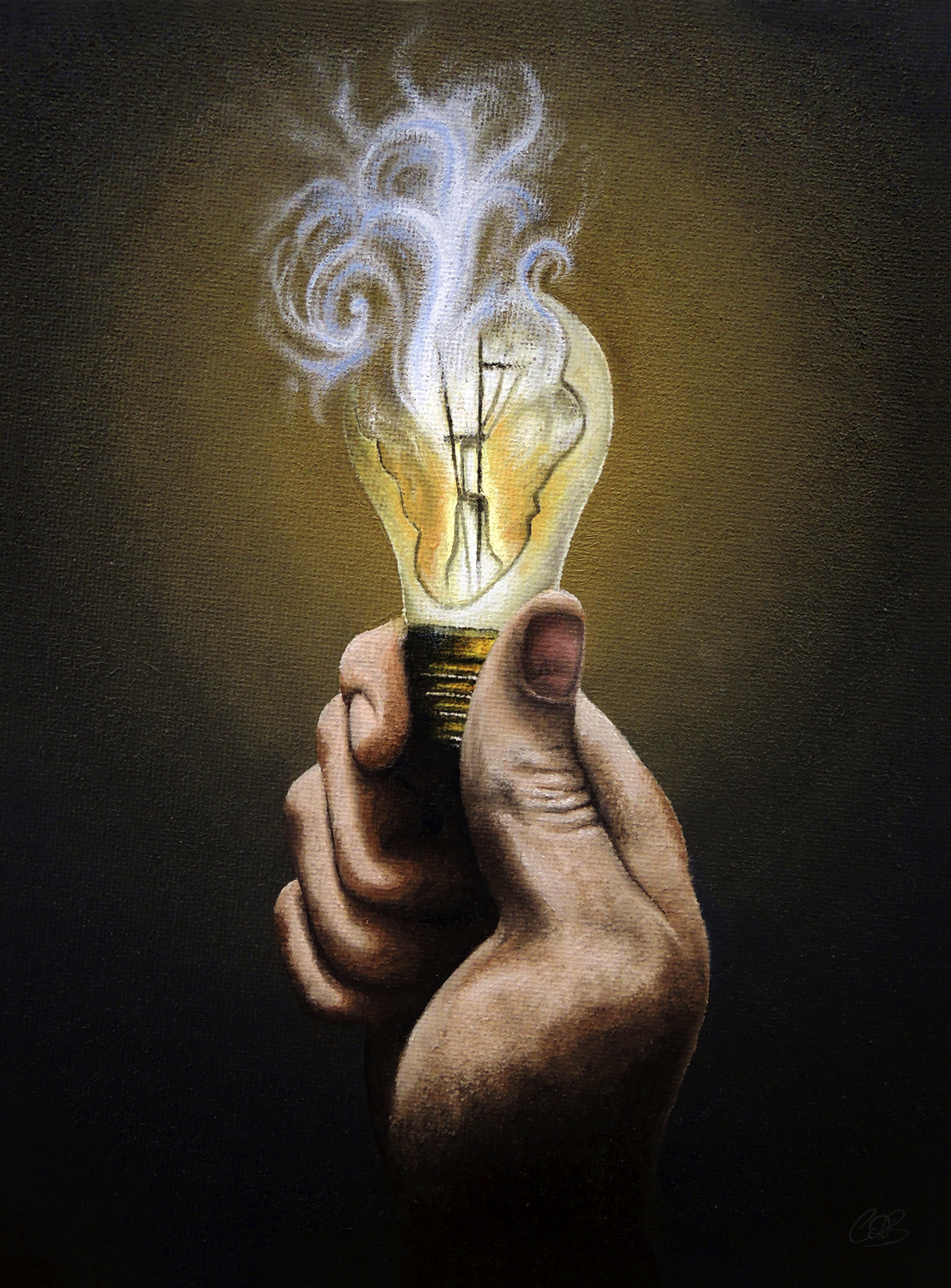
Running Out of Ideas
Significant and Important Features
The Urban Typography series is linked via their subtle, yet prominent pieces of typography included within their composition. These are implemented with a realistic style, which is often mistaken for actual photography as opposed to a semi-relief piece. The works enabled a direct observation of our local urban environment, providing emphasis on decayed areas within an area often associated with the new. From studying his outcomes, I noticed his detail in regards to composition which often follows the rule of thirds principle, when composing typography elements, ensuring they are not displayed as the direct centre of his work. Although it may seem obvious, I also admired how each piece is different from each other, resulting in a more dynamic and experimental series.
Working Methodology and Process
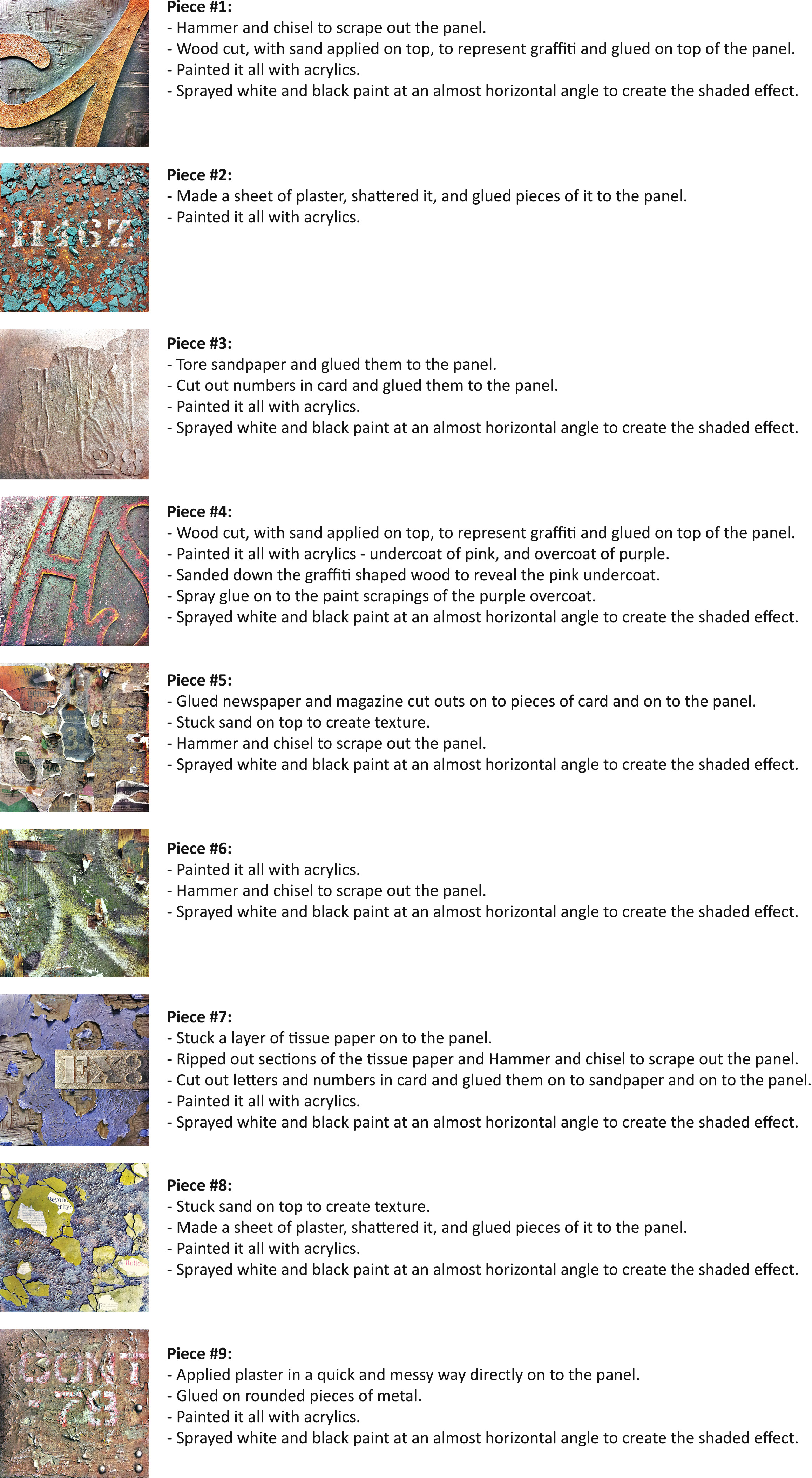
In regards to his working practice for his traditional painting, O’Brien begins by establishing an initial composition from which he begins to create his work; adding elements from his imagination as he continues throughout. Certain aspects are already defined; however additional elements may be incorporated. This highlights his spontaneous approach to his work, and is probably why his style often shares a sense of truth and validation.
Personal Evaluation
The direct discovery of O’Brien and his work, via the Ulster University Degree Show, kick started my project. After viewing his photography work I was captivated, leading me to investigate him further. From this, I learnt about his ‘Urban Typography’ series which instantly inspired me, providing a foundation of potential experiments and ideas to consider for my upcoming project. I personally admire O’Brien as an artist due to his versatile range of media and techniques for achieving his work, as well as the high quality of them. When I first viewed his ‘Urban Typography’ series I was intrigued, as I thought they were photographic close ups. However, upon finding out they were handmade, I was shocked and excited with the prospect and potential for use in my project. I got in touch with O’Brien via email during the summer, to ask him a range of questions regarding his general working practice and the Urban Typography series in particular. He was very informative within his responses, and was extremely genuine and honest with his answers. I felt that his provided answers provided a further amount of context to his imagery.
Author – David McDonnell
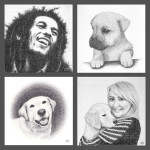
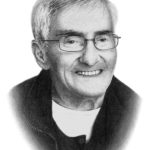
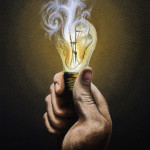
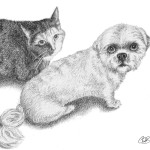
Donna
Enjoyable read and very insightful work!
Conor O'Brien
Thanks Donna. I enjoyed reading it too, and found it very beneficial as a form of self-evaluation.